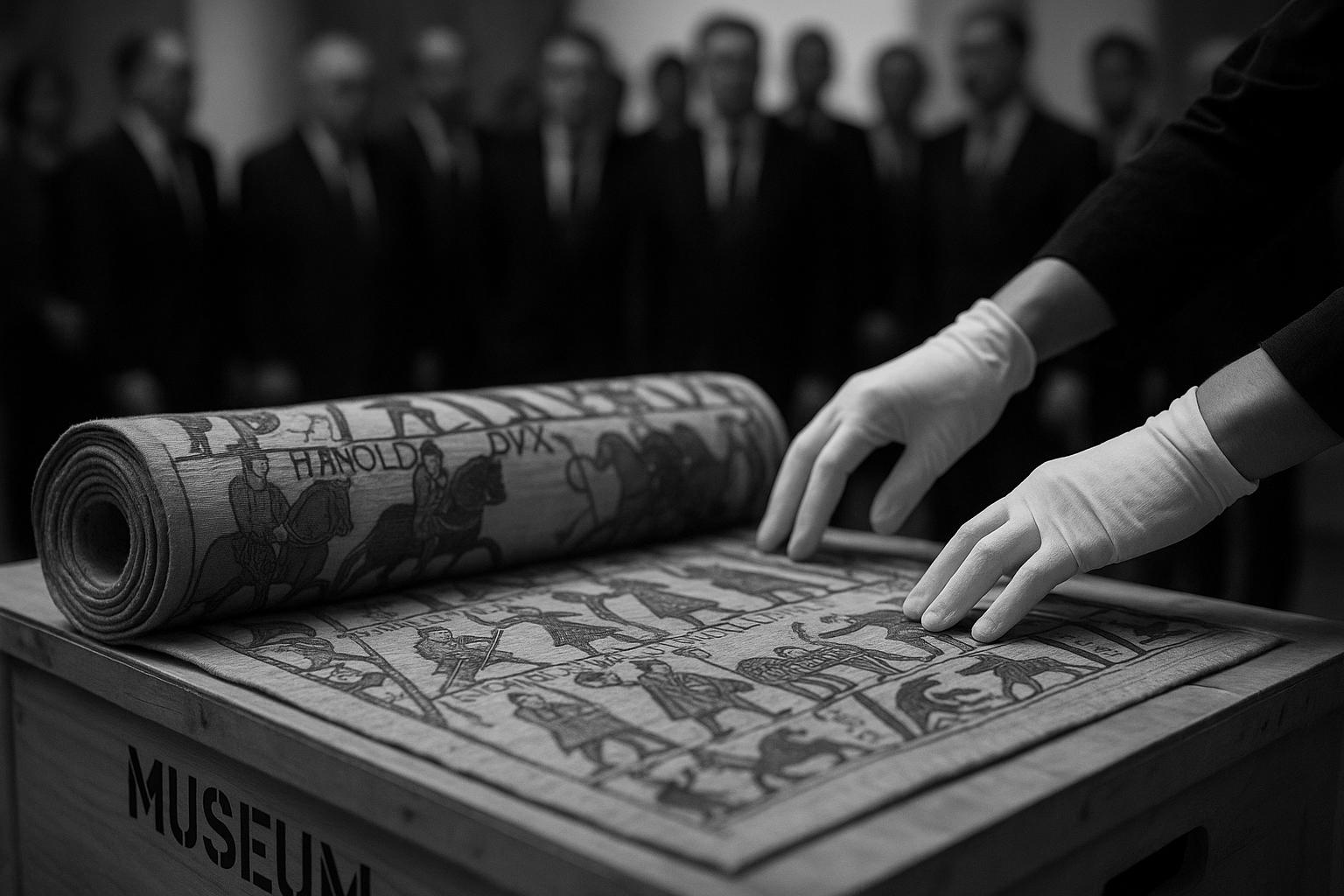James Norton said he had reassured President Emmanuel Macron that the BBC’s new drama about 1066 treats both sides of the story fairly after meeting the French leader at an event at the British Museum. “I met President Emmanuel Macron recently at the event at the British Museum where the Bayeux Tapestry is being moved to, and I was very quick to reassure him that we had told the French story, the Norman story, with as little bias as possible,” Norton told the Evening Standard, where he also described the care taken in research and character balance.
The comment comes as the BBC prepares to roll out King & Conqueror, an eight‑part historical drama that casts Norton as Harold, Earl of Wessex, opposite Nikolaj Coster‑Waldau as William, Duke of Normandy. According to the BBC Media Centre, Norton and Coster‑Waldau serve as executive producers on the series, which was created by Michael Robert Johnson and whose opening episode was directed by Baltasar Kormákur. Reporting by Digital Spy and the Evening Standard has emphasised the show’s attempt to broaden the familiar schoolroom account of 1066 into a character‑driven examination of politics and personal rivalry.
The BBC says all episodes of King & Conqueror will be available on BBC iPlayer from 24 August, with the first episode also scheduled to air on BBC One that evening. The broadcaster’s press materials and subsequent coverage have highlighted the production values and filming locations — including shoots in Iceland — while noting the drama’s ambition to allow audiences to weigh both Harold’s and William’s perspectives.
Norton’s remarks were made at an event connected to a separate, high‑profile cultural move: the Bayeux Tapestry is due to travel to London as part of a historic loan. The British Museum has announced a loan arrangement to display the 70‑metre embroidered depiction of the Norman invasion and the Battle of Hastings in its Sainsbury Exhibitions Gallery in autumn 2026, a period the UK government has specified as running from September 2026 to July 2027. Museum and government statements make clear this will be the tapestry’s first exhibition in the UK in more than nine hundred years and that the loan is reciprocal — with the British Museum lending items such as Sutton Hoo treasures and the Lewis chessmen to museums in Normandy.
Officials and journalists have underlined the logistical and conservation complexity of the move. Government and museum briefings note that the loan was agreed at high political levels and will involve specialist packing, transport and conservation oversight; coverage by AP News and others has framed the arrangement as both a major curatorial undertaking and a diplomatic gesture, with commentators observing its significance for cultural ties between Britain and France in the post‑Brexit era. The Bayeux Museum itself is scheduled to close for renovation from September 2025, a detail the British Museum has cited as part of the rationale for the loan.
The juxtaposition of a high‑profile historical drama and the physical return of a centuries‑old artefact underlines different ways history is presented to the public. Actors and producers can assert the intent to balance perspectives — as Norton did — but museums, conservators and governments frame their interventions around preservation, provenance and public education. Both forms of storytelling will reach wide audiences over the next year: viewers will be able to watch the BBC series from 24 August, while the tapestry’s installation at the British Museum is scheduled for September 2026.
📌 Reference Map:
##Reference Map:
- Paragraph 1 – [1], [2]
- Paragraph 2 – [5], [6], [2]
- Paragraph 3 – [5], [6], [2]
- Paragraph 4 – [3], [4]
- Paragraph 5 – [4], [3], [7]
- Paragraph 6 – [1], [5], [3]
Source: Noah Wire Services
